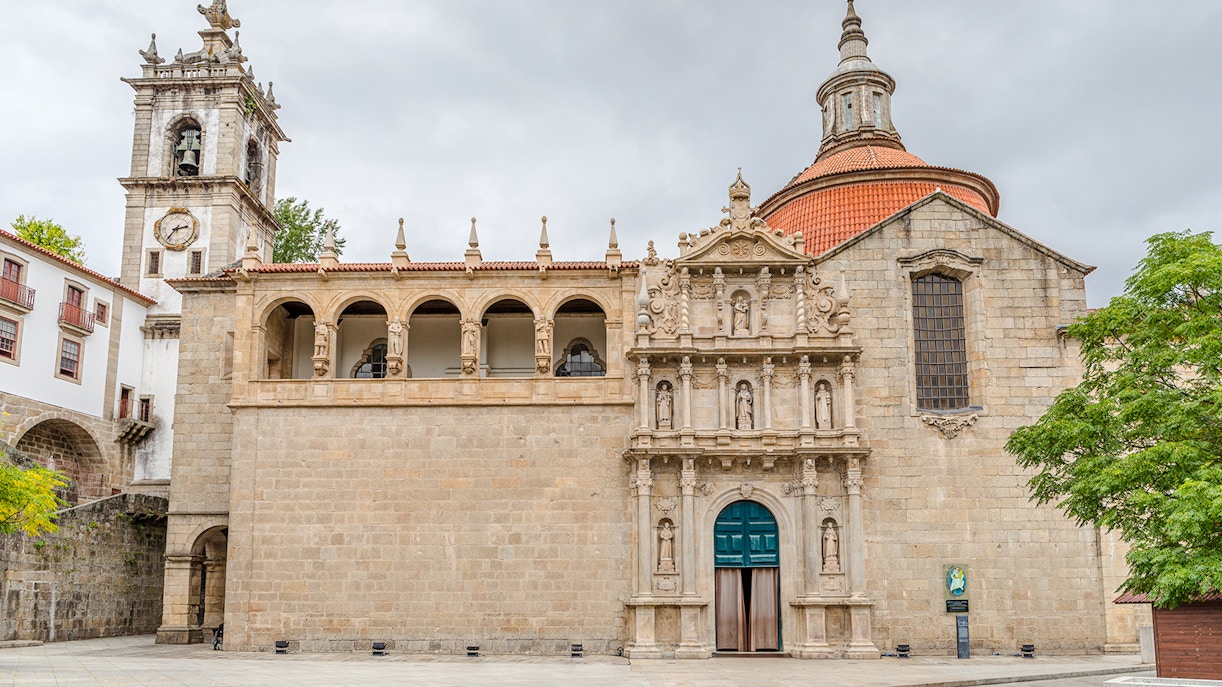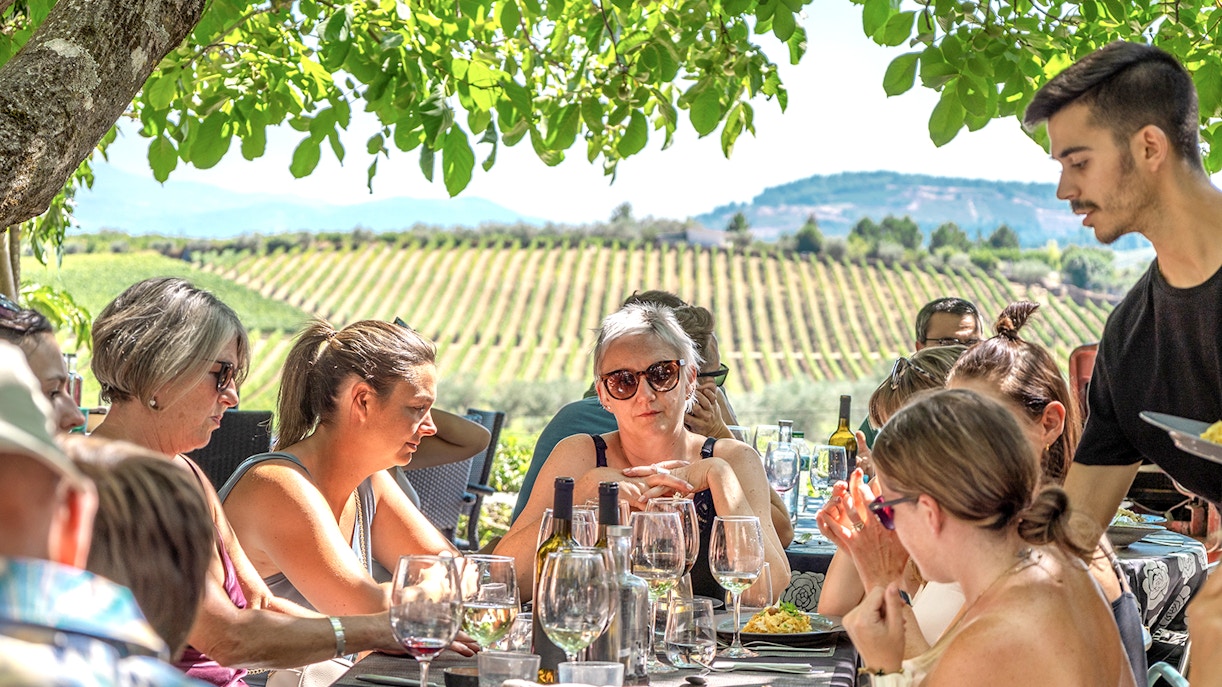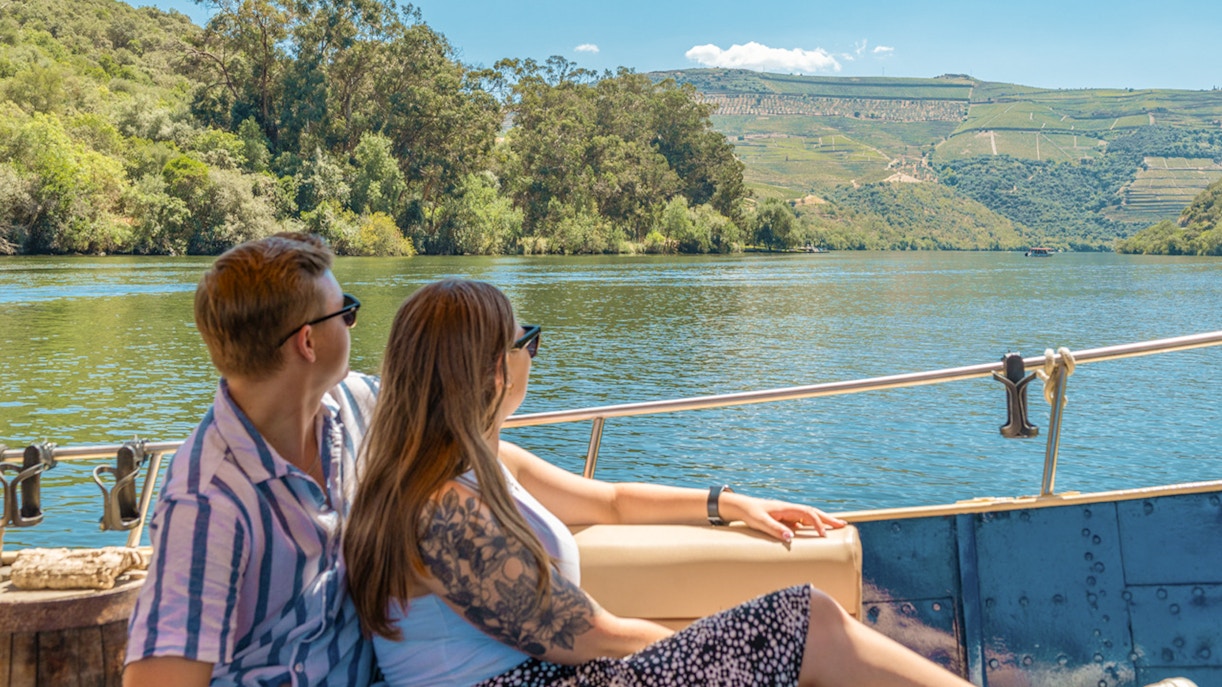- From Porto: 100 km/62 mi
- By train: About 2.5 hours (São Bento/Campanhã → Régua or Pinhão)
- By bus: Around 2 hours
- By car: Roughly 1.5 hours (no stops)
- By tour (round trip): 9–10 hrs including sightseeing
Where is Douro Valley? The valley sits about 100 km east of Porto, close enough for a dreamy day trip, yet far enough to feel like another world. Getting back is a breeze: trains are scenic and wallet-friendly, buses keep it budget and simple, car rentals give you the freedom to chase viewpoints, and guided tours mean zero planning with plenty of extras. Summer weekends fill up fast, so book early if you want the smoothest ride home.
The Douro Valley is beautiful but sprawling. Stations don’t always match cruise piers, roads twist for miles, and tastings often require reservations. A guided tour solves all of this, turning a logistics puzzle into a laid-back adventure:
| Mode | Duration | Cost | Best for | Key notes |
|---|---|---|---|---|
Guided tour | 9–10 hours | €80–€500 | First-timers, families, wine lovers | Includes transfers, estate tastings, river cruise, and village stops |
Train | 2–2.5 hours | €10–€15 | Budget DIY, scenic travelers | Station → estates require taxi/shuttle; peak trains are crowded |
Bus | 2 to 3 hours | €8–€12 | Budget, direct point-to-point | Traffic can add 30–45 minutes; the last mile requires a taxi/shuttle |
Car/ self-drive | 1.5–2 hours | Rental + fuel + tolls/parking | Groups, detour-friendly, photographers | Winding roads; limited parking; flexible stops along N222 |
Wondering how to get to Douro Valley from Porto? Here’s the lowdown from someone who’s been there:
Wander cobbled streets, cross the iconic medieval bridge, and peek into centuries-old churches. Snack on local pastries while watching the Douro River sparkle. Amarante is small but full of charm and storybook vibes.
Climb up or drive to this dramatic viewpoint above the Douro River. The terraced vineyards spilling down the hills and the twisting N222 below make you feel like you’re inside a postcard. Sunrise or sunset? Pure magic.
The ultimate wine village, framed by vineyards and river views. Don’t just snap the tiles at the railway station, they tell the whole story of Douro’s winemaking. Also, the charming cafés and riverside benches are perfect for people-watching.
Hop on a 60-minute cruise and let the valley drift by. Ancient estates, terraced vineyards, and postcard-perfect riverside towns glide past your window. Cameras out, relax, and soak in the Douro vibe.
Drive the ribbon-like N222 along the river. Vineyards, quirky villages, and lookout points pop up around every curve. Stop for selfies, lunch at a vineyard, or just roll the windows down and feel the valley breeze.



Yes. Day trips are the easiest way to reach Douro Valley as the ticket includes round-trip air-conditioned transfers.
It depends on your style of travel. The Porto to Douro Valley train is scenic and affordable, driving offers flexibility, and tours provide convenience. Boats are the slowest but most relaxing.
By train: 2–2.5 hours, by car: 90 minutes to Régua, 2 hours to Pinhão, by boat: 6–7 hours one way and by bus: 2.5–3 hours, depending on the route.
The stretch between Peso da Régua and Pinhão runs right along the Douro River, offering some of the best vineyard and valley views.
Yes, especially during summer weekends. The train is popular with both tourists and locals, and tickets often sell out.
Most Porto Douro Valley cruises end in Peso da Régua or Pinhão. Some continue further, but full-day return trips usually combine boat one way and train the other.
Absolutely. The fastest way is A4 → A24 to Régua. For a scenic drive, take the N222 road between Régua and Pinhão, often called one of the most beautiful roads in the world.
Peso da Régua is the most accessible. Whether you go by train, bus, or car, it’s the best base for first-time visitors exploring the valley.
A private car transfer or self-drive is best for families. It allows flexibility for stops, easier luggage handling, and avoids crowded trains or buses.
Classic Douro Valley Guided Tour with 1-Hour Pinhão Cruise, Traditional Lunch & Wine Tastings
Small-Group Douro Valley Guided Tour with 1-Hour Pinhão Cruise, Traditional Lunch & Wine Tastings
Historic Douro Valley Guided Tour with 1-Hour Pinhão Cruise, Traditional Lunch & Wine Tastings
From Pinhão: Douro Valley Rabelo Boat Tour with Wine Tasting and Lunch
Full Day River Cruise to Douro Valley with Meals and Return Transfer
Private Douro Valley Guided Tour with 1-Hour Pinhão Cruise, Traditional Lunch & Wine Tastings